
Inoue Shinkai Wakizashi
S05239
SOLD
An ubu wakizashi with an early signature, Inoue Shinkai / engraved Kiku mon, Kambun 12th year 6 month day (a day in August, 1672) Shinogizukure, iroi mune, chu kissaki. Hawatare: 1 shaku 7 sun 9 bu (54.24 cm or 21.35") . Motohaba: 2.89 cm. Sakihaba: 1.95 cm, Kasane: 6.18 mm. Notareba in konie deki. There are long dark kinsuji throughout the blade, the color of inazuma, but a much finer line. Nado. The jigane is a tight ko-itame with ko-mokume, fine ji nie, chikei, nado. The boshi is komaru with nijuba and inazuma. Mounted in shirasaya with Meiji sayagaki, one piece gold foil habaki.
Rated Saijo saku Nihon Toko Jiten - Shinto Hen, Valued at 20,000.000 yen in Toko Taikan, which is higher rating than some of the early Soshu smiths he was emulating. He is given 25 pages in Shinto Taikan, a double square in Nihonto Meikan, top of three rating systems in Nihonto Zuikan. As of 1999 there were 38 Shinkai juyo rated swords.
Known as The Masamune of Osaka, he was the second son of Izumi no Kami Kunisada, and signed his father's name for the first part of his career. In 1661, at the age of 30 and still signing, Izumi no Kami Fujiwara Kunisada, Shinkai presented a sword to the imperial court and received the right to engrave the kiku mon on the nakago of his blades. In 1672 he became a lay priest, and took up the name Inoue Shinkai . He reached the height of his skill. emulating the works of Go Yoshihiro. As such, the works of the Empo period (1673-1680) are considered to be the best works made under the full maturation of his style and technique, so they are the most impressive and important .
The career of Shinkai spans from 1649 to 1672 where he signed with the name Kunisada. From 1672 to 1682 he signed Inoue Shinkai. Though the last part of his career is only 30% of his work span, 53% of the Juyo Token come from this period.
$16,500
I am not an expert, and I rely heavily on Japanese certificates, some more than others. It has come to my attention that there is chatter that this sword failed NBTHK shinsa. Had I been aware of this, the listing would have been different, or not have happened at all. However, the NTHK/NPO papers were issued under Miyano, whose nickname in Japan was The Computer because of his encyclopedic knowledge and recall. Many years ago, at the Minneapolis show, Mike Christenson thought to sandbag Miyano with a mumei wakizashi with sayagaki to one smith, and NBTHK papers to another (I don't remember the smiths). He handed him a sword and asked what it was. His immediate response was, (it looks like the first smith, but the work is not so good. so it is the second smith).
When last in Japan, a well placed Japanese dealer, who will remain anonymous, said, "this shinsa is very weak".
My opinion would be that it needs to get in front of Tanobe Sensei.
As such, I am open to offers, which I will pass along to the consignor.






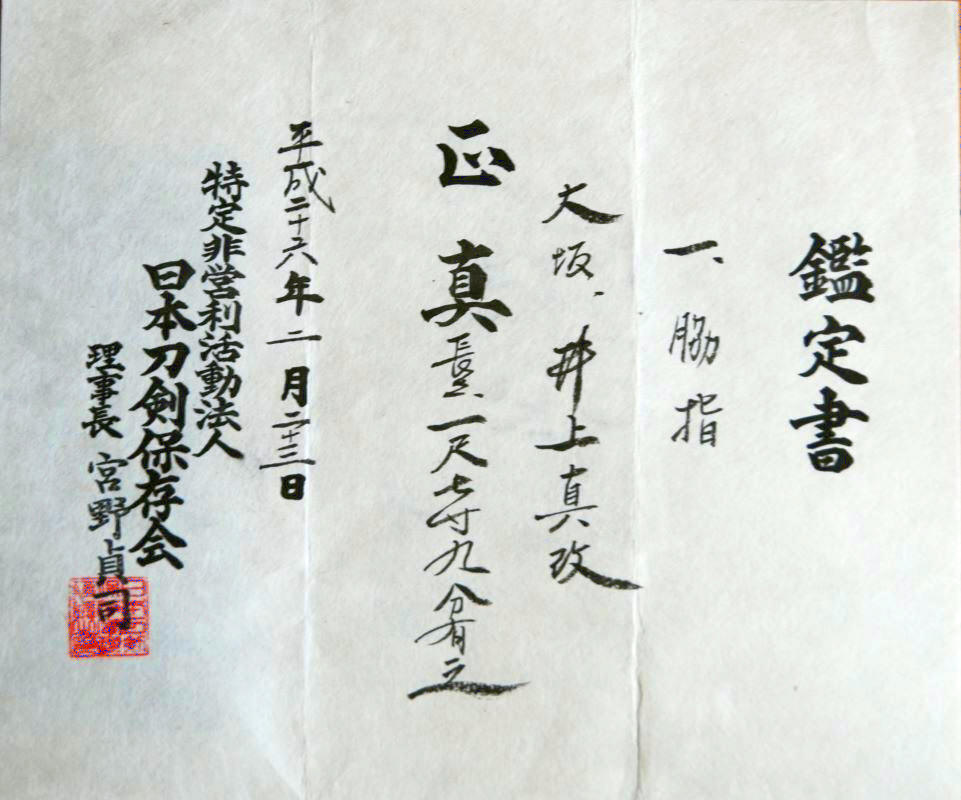

NTHK/NPO Kanteisho

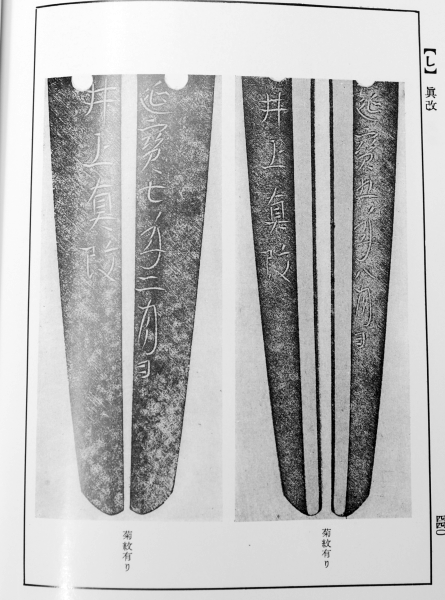
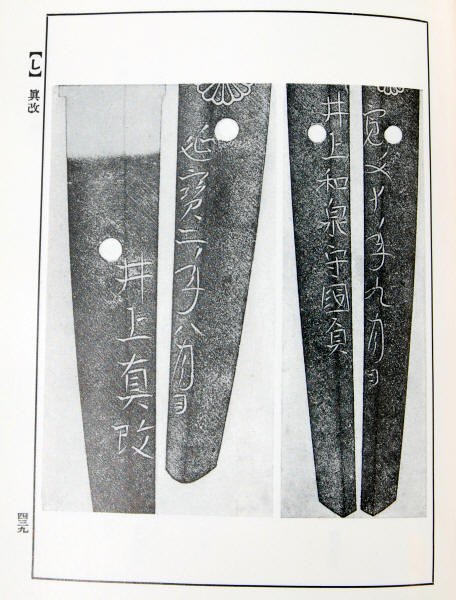

Nihon Toko Jiten - Shinto Hen
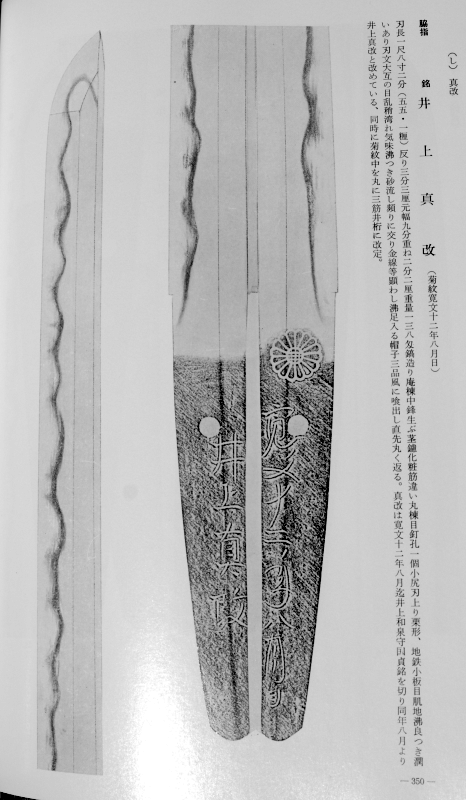
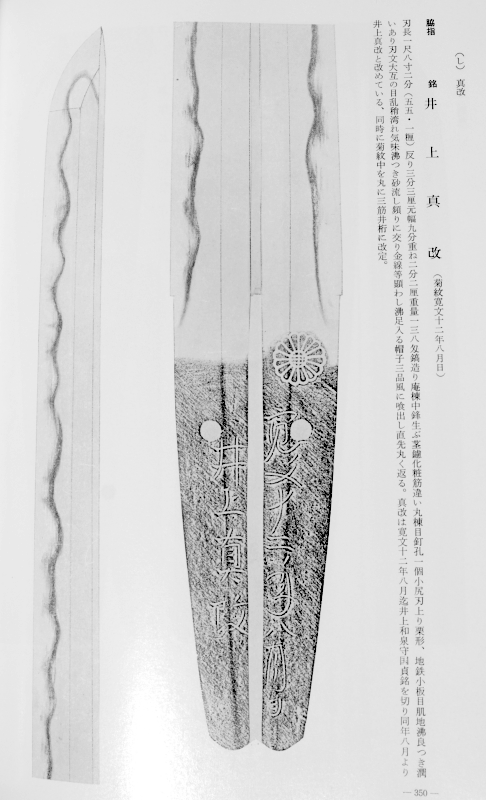
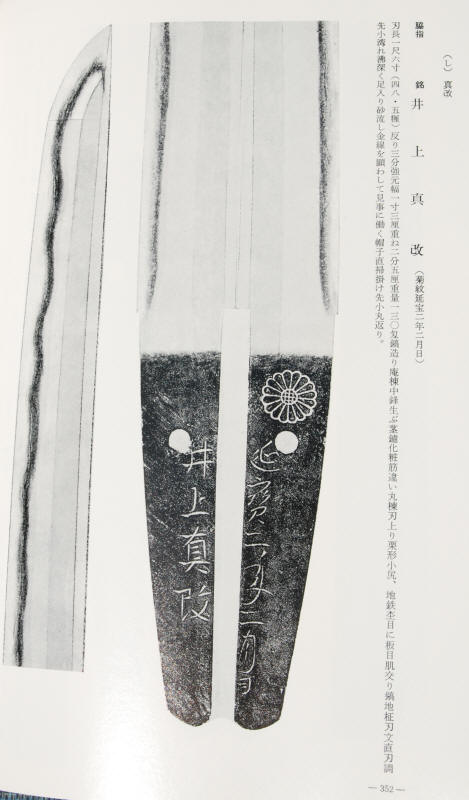
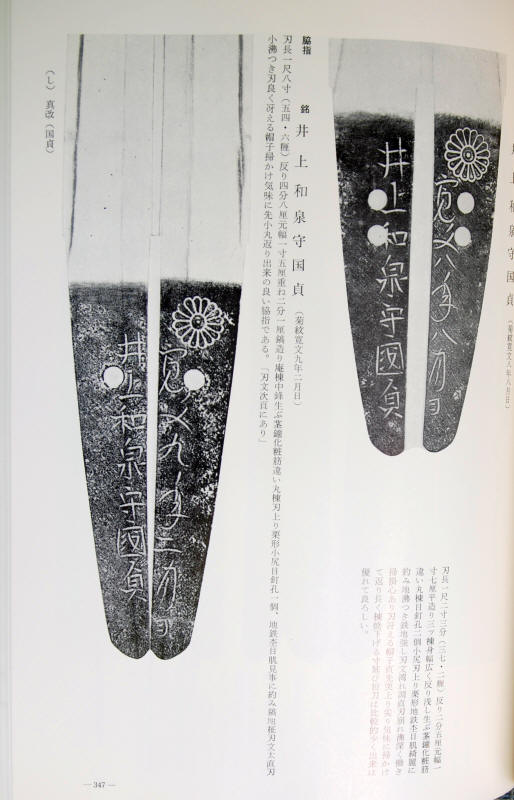
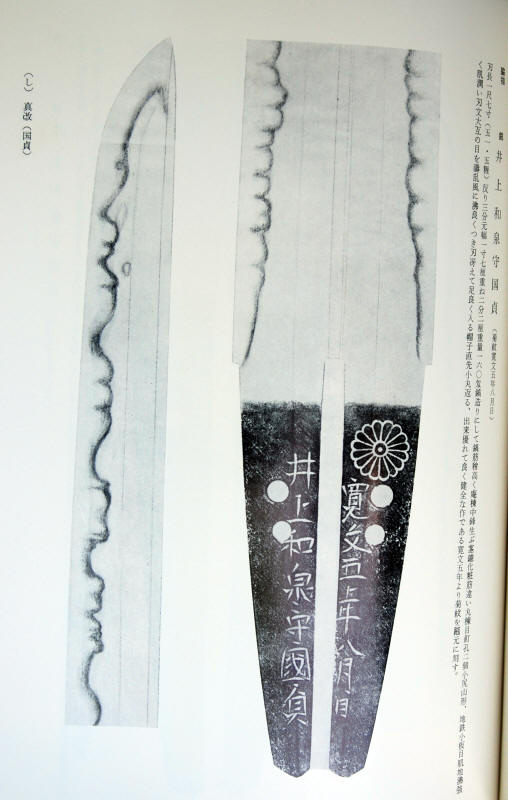
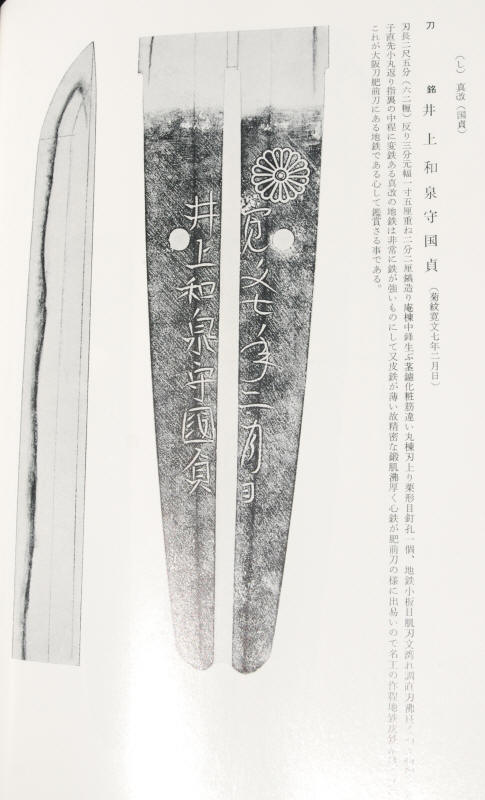
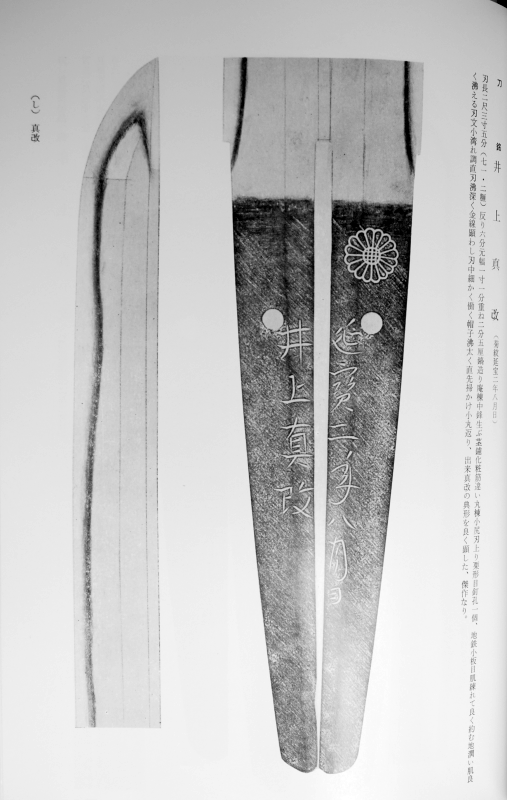
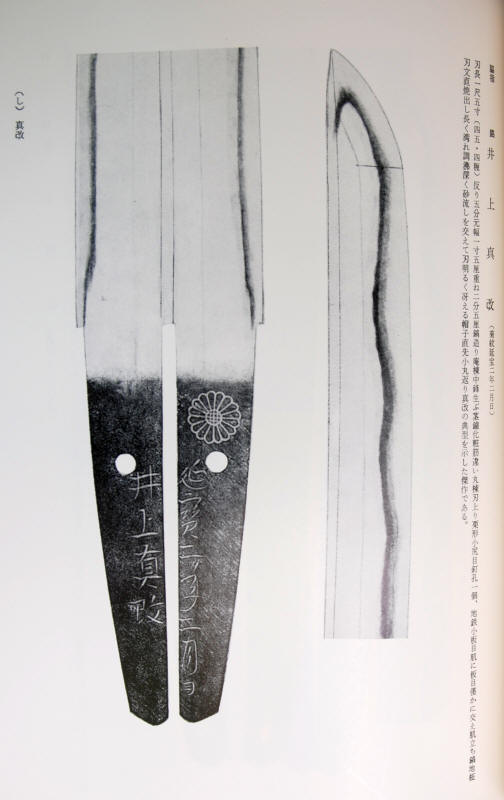
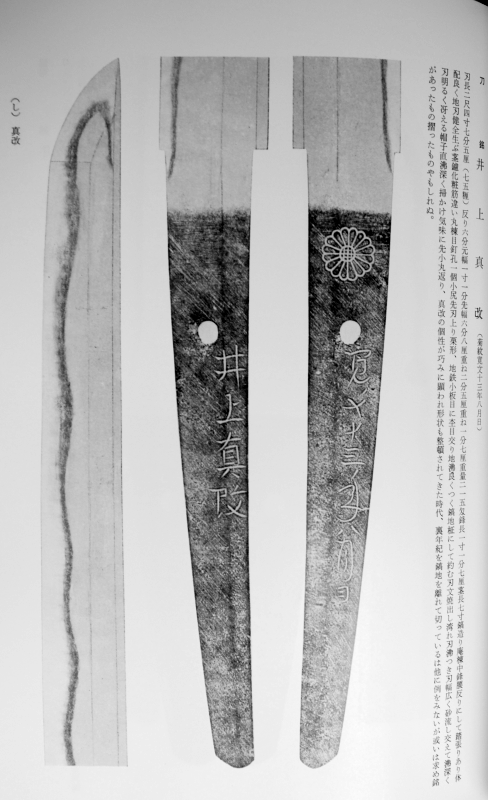
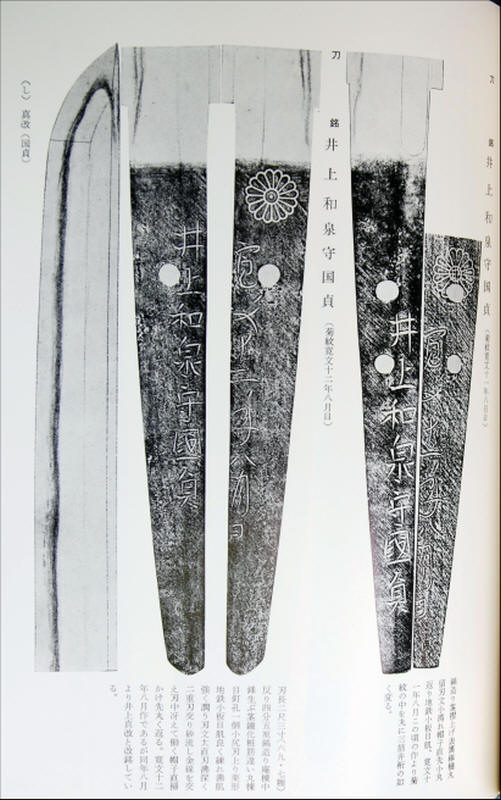
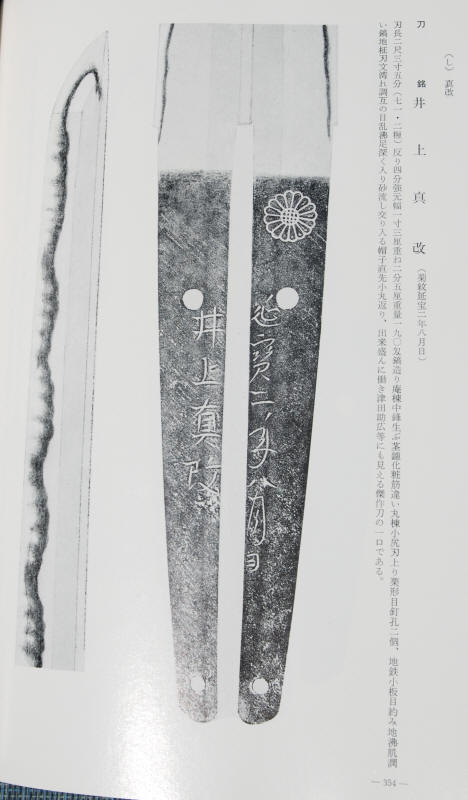
Shinto Taikan
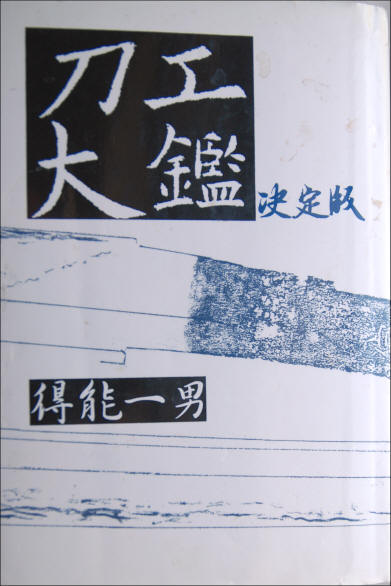
Toko Taikan